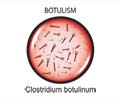A simple test that would help detect tainted milk within few hours has been developed by researchers.
A simple test that would help detect tainted milk within few hours has been developed by researchers.
Amer AbuGhazaleh, from Southern Illinois University Carbondale's College of Agricultural Sciences, and Salam Ibrahim, a food microbiologist from North Carolina Agricultural and Technical State University, have shown that the combination of certain bacteria and a common purple dye can reveal the presence of toxins in milk in just a few hours."To date, detecting the presence of toxins or pesticides has only been possible by sending samples to a laboratory and waiting a few days for the results," said AbuGhazaleh.
"An important step toward improving the safety of our dairy supply would be the development of an effective, simple and rapid test that would allow farmers or processors to detect the presence of foreign substances," the expert added.
During the study, the scientists decided to focus on the bacteria that ferment lactose (milk's sugars), producing lactic acid.
"For one thing, these bacteria already exist in milk, so if you add some, you're not doing anything strange," said AbuGhazaleh.
"Second, they produce a change over time (the lactic acid) that we could monitor. If we didn't see the change, we would know something was wrong," the expert said.
Advertisement
They then added purple dye to milk samples containing both toxins and bacteria and to samples containing only bacteria.
Advertisement
"This kind of color test could be performed by farmers themselves," AbuGhazleh said.
"They could add the bacteria and the dye to a sample, leave it alone for a little while and then come back to see if there is any change in the color. If there isn't, there are problems with the milk," he added.
Source-ANI
ARU













